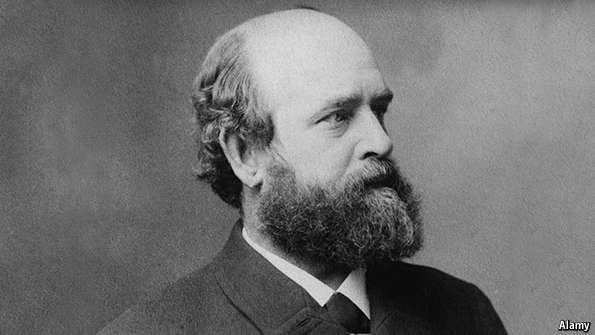One consistent applause point for left wing populists in the United States is how the most profitable corporations in the United States, like Apple, Amazon, IBM, etc get away with paying relatively little in taxes – and sometimes none at all in Federal income taxes.
One particularly instructive example is Apple, the most profitable company in the United States. For many years, this company dodged taxes using a very clever loophole. Any reasonable person would say that Apple is a California-based company that does most of their business in Cupertino. And indeed, Cupertino is where their research and development takes place. However, Apple dodges a great deal of its taxes by transferring its intellectual property to its Irish Subsidiary, claiming that, although its products say ‘designed in California’, the majority of those profits should be considered profits of Apple Sales International, based in Ireland. As a result, Apple effectively paid only single digit tax percentages on its income to the US government.
Apple is instructive in that it is a new sort of company — one that relies on intellectual property for an enormous proportion of its worth. This means two things: first, that its other assets in the US, and therefore investments in the US, contribute less to the overall state and local tax base. Second, it means that Apple, more than any company in the world, relies on the US government, and its agreements with other governments through the WTO and others, to uphold the value of its assets. Thus Apple is a useful example for demonstrating why a tax on intellectual property would be both fair and efficient.
First, let’s look at Apple’s other assets and expenses in the US. The company employs 47,000 Americans,. That’s slightly fewer employees than Ford Motor Company, which has only two thirds the revenue. This is of course because the vast majority of the manufacturing for Apple occurs in China and is contracted out to companies like Foxconn. So while a traditional industry giant, like Ford, has billions of dollars in buildings and equipment that can theoretically be taxed by local governments (though of course tax deals often nullify this possibility), and millions of dollars in payroll that is effectively taxed by states and the Federal government, Apple has little of either. Apple creates immense value with both its technological innovations and its branding and design, but much of that value is intangible — it can be transferred (say, to Ireland) without incurring any real inconvenience for the company. This is particularly important as more and more value is in this form. Think about any rapidly growing company, like Facebook or Google or Uber. The value they create is intangible, which makes it difficult for ANY government to effectively tax it under current laws.
However, there’s another side to the equation. A Ford truck certainly has value added by the Ford brand, and by the patents that Ford holds — but the physical product still has a great deal of intrinsic value. Even if the US didn’t vigorously enforce Ford’s brand copyright and patents. Ford’s products would have value, and the business of automotive manufacturing would be a viable one.
On the other hand, companies based on intellectual property, especially tech, media, and pharmaceutical firms, rely on US IP enforcement for an immense portion of their value. Although Apple is ostensibly a device manufacturer, it does little in-house manufacturing: almost all of what the corporation itself brings to the table requires IP protection to have value. This is equally true of media companies – while they already lose billions from ‘piracy’, without government enforcement of IP it is likely these losses would mount to the extent that the entire industry would lose viability in anything like its current form. And pharmaceuticals, another class of the most profitable companies worldwide, are equally reliant on this government enforcement. The formulas they spend billions testing and developing can be reverse engineered with relative ease; without patent protection, most blockbuster drugs would be competing with far cheaper generics within a few months. For all of these sectors of the economy, major assets both draw their value from government action (a key determiner of the ‘fairness’ theory of taxation), and are almost impossible to hide (since they must be registered with the government to have value — thus meeting the ‘efficiency’ criterion for an effective tax).
It’s also not clear that the current IP regime is having the desired effect of spurring important innovations. It is no secret that many economically revolutionary technologies from the past few decades, from the internet to CRISPR, have been developed completely or largely with public funds. The publicly funded National Institute Of Health is responsible for 75% of the most innovative new drugs annually in the US. This should come as no surprise, given the incentive structure of the government as opposed to that of a private corporation. May of the technologies and procedures needed to create the internet had little obvious potential for short term profitability. Indeed had they been patented, they may well have taken much longer to take off – after all, the real utility of the internet comes from network effects, which means a broad diffusion of the technology is needed for it to be impactful. Similarly, current pressing technological problems – such as the generation of energy without releasing greenhouse gasses – have the potential to generate enormous positive externalities, but may not yield enough short term revenue to be profitable for corporate R&D. While private R&D has an important role, public investment will always be a key driver of innovation. Mariana Mazzucuto writes convincingly that government investment is important to take these kind of risks that corporations are averse to, and to make investments that ultimately guide the direction of innovation. Simply propping up the value of IP with enforcement and tax benefits (relative to physical property) is unlikely to have that impact.
Instead, the current structure of IP encourages companies to keep as much of their assets in the form of IP as possible. This creates myriad legal monopolies, allowing companies to be profitable while artificially limiting the quantity of goods they are likely to produce. This is true of monopolies generally – it is even more true if there are taxes on the investments needed to create actual goods (factories hit by local property taxes and production workers who incur a payroll tax) but not on the assets that defend the monopoly position (intellectual property). The system is set up to incentivize the underproduction of consumer goods like pharmaceuticals and devices in order to sell them with a large margin, but disincentivize the investment in any research that’s not profitably marketable within 7 years (the length of a typical patent).
What I’m proposing, then, is a progressive tax on the value of intellectual property registered in the United States – regardless of the jurisdiction in which that IP is officially owned – and the use of that revenue stream to fund public research and development. The potential revenue from this source is immense: consider that the top ten most valuable brands in the US are estimated at being worth a total of $787 billion dollars. Add in the value of incredibly valuable properties like film characters (Marvel’s are worth billions) or blockbuster drug patents, and even a 1% tax, levied only on properties worth $100 million or more, could bring in substantial sums of money. And applying that money towards research in fields where breakthroughs will yield large social benefits decades down the line will guide technological progress into areas where it would be otherwise unprofitable. This would preserve the incentives for private entities to make investments in intellectual property, while discouraging some of the worst abuses of the system and ensuring that technology that creates positive externalities, or relies on substantial network effects, gets the investment needed to continue moving forward.
What of potential objections? Of course the first objection to any kind of tax would be the potential for deadweight loss — firms producing less IP in the knowledge that it would be taxed. However, a highly progressive tax would hardly make a dent in the production of IP, for a couple reasons. First, it would hit only blockbuster properties, those worth tens of millions of dollars. Those properties are expected to make many times their development cost back, in part to pay for those IP investments that never work out. The ‘goods’ produced by companies are increasingly non-rival and thus not subject to diminishing returns at scale (think about Google’s algorithms or Apple’s designs — the marginal cost of adding new sales never seems to rise), the products of the future will increasingly lend themselves to natural monopolies. Knocking a couple percentage points off the profit margin for those highly successful properties is unlikely to make them less attractive for the companies that have resources to make those kinds of investments, and a progressive tax on IP may even help to level the market. The progressive nature of such a tax, moreover, would eliminate what would otherwise be a major concern, the effect on independent creative producers of IP.
Indeed, if such a tax did change the way the IP market operates, its most likely effect is to reduce IP behavior that is essentially rent seeking: patent trolling, pharmaceutical evergreening, and the endless lobbying to extend the copyrighted lifetime of valuable properties like Mickey Mouse. Because these activities already incur a dramatic deadweight loss on the economy and society (patent trolling alone is thought to costs tens of billions of dollars), a tax system that discouraged them could increase overall efficiency in the IP market. If the revenue from the tax were immediately applied to public R&D, the increase inefficiency is almost inevitable. Creating technologies that are not subject to patent litigation, monopolization, and the like would lay the foundation for a much more vibrant knowledge economy, more than overcoming any deadweight loss.
Applying the tax to all properties licensed and enforced in the US would remove another obvious objection to most corporate taxes — they are easy to dodge. Indeed, companies would be left with little choice: pay the tax, or lose the ability to defend their valuable IP in the biggest market in the world. It would, however, invariably run up against another major legal hurdle: the WTO and other multilateral trade agreements. These increasingly govern how nations deal with IP, and such a scheme would undoubtedly run afoul of some international rules. However, the best response to this is simple: work within those frameworks to allow major markets for IP to collect revenues based on the value their governments protect with their copyright and patent enforcement. The US has frequently been the driving force behind increasing the profitability of IP worldwide and more strictly enforcing the rights of IP holders; the US would likely make more allies in such negotiations if it instead fought for the rights of nations to derive more financial benefit from their own IP markets.
Instituting this tax, therefore, would be difficult: a new tax is always going to face stiff opposition, and one that involves re-negotiating foreign trade deals all the more so. However, as an increasing percentage of the value created in the world comes from non-rival goods that are excludable only with government enforcement, it’s both fair and necessary for governments to find ways to gain revenue from these sources that are harder to avoid than current taxes on corporate profits. The alternative is increasingly cash-starved governments, stagnating public research investment, and more corporations with bank accounts rivaling those of nations — a result that should be considered universally unacceptable.





